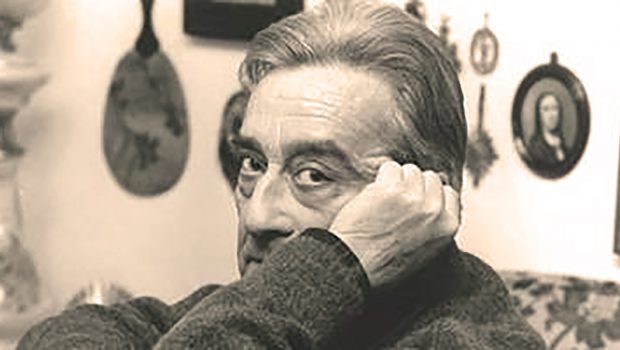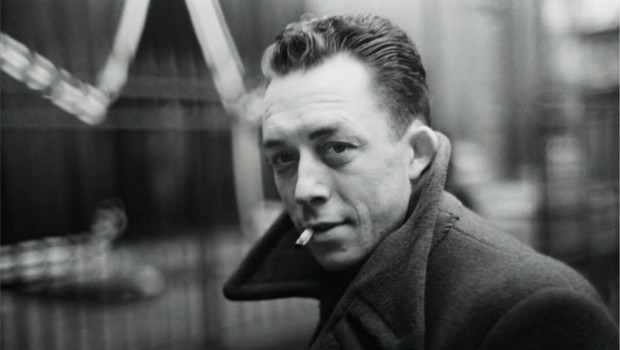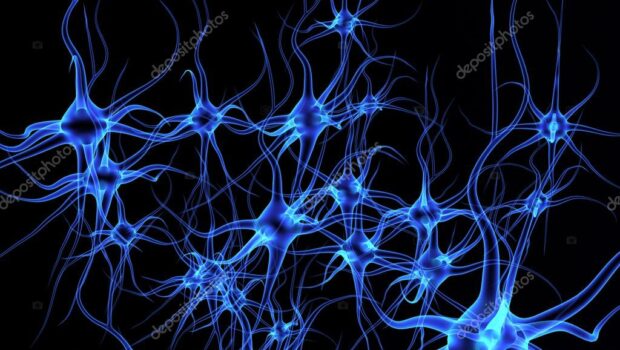José Martí: The End of a Myth?
Maarten van Delden
In an article about the heroes of the Spanish American Wars of Independence published in the children’s magazine La edad de oro, José Martí evokes a traveler who upon arriving one evening in Caracas does not inquire where he might get some food or rest, but instead asks for directions to the statue of Simón Bolívar: “Y cuentan que el viajero, solo con los árboles altos y olorosos de la plaza, lloraba frente a la estatua, que parecía que se movía, como un padre cuando se le acerca un hijo.” Martí goes on to commend the traveler for his emotion, “porque todos los americanos deben querer a Bolívar como un padre.” This does not mean that Bolívar and the other heroes Martí discusses in this piece—Miguel Hidalgo and José de San Martín—are infallible human beings. “Los hombres,” he instructs his young readers, “no pueden ser más perfectos que el sol. El sol quema con la misma luz con que calienta. El sol tiene manchas.” But it is clear that in the case of these great men—“hombres sagrados,” Martí calls them—attention to their possible flaws is unwarranted: “Los desagradecidos no hablan más que de las manchas. Los agradecidos hablan de la luz.”
It seems likely that the traveler in this tale is Martí himself. We might wonder whether Martí, as he communed with the statue of Bolívar on that fragrant evening in Caracas, reflected upon the heroic role he himself would come to play in the struggle for Cuban independence. One day he, too, would be an eminent statue, a father of the nation, a sacred figure. After his untimely death in a battle with Spanish forces at Dos Ríos, Cuba, on May 19th 1895, Martí would come to be enveloped in an aureole of light by the intellectuals, biographers, critics, politicians and others who helped forge the myth of José Martí in twentieth-century Cuba. And perhaps Martí may even have taken a moment to think about the ungrateful ones who would eventually try to pull him down from his pedestal. If so, he would have shown exceptional prescience. For in our current age of disenchantment, there is less and less patience with the monumental Martí who has come to preside over Cuban culture. A more critical, demystified image of the Cuban poet-revolutionary has emerged in recent decades. The need for heroes and father-figures is evidently less urgent today than it was for Martí himself and for his many worshipers in Cuba and elsewhere.
Martí had already been described as an “apostle” during his own lifetime, but it was after his death that his cult truly took root in Cuba. Monuments and biographies, holidays and parades, speeches and conferences—all contributed to shaping the Cuban poet-revolutionary’s saintly image. To get a sense of the exalted view of Martí that came to prevail in Cuba, one need only consult three infl uential biographies published in the 1930s and 40s: Jorge Mañach’s Martí, el apóstol (1933), Félix Lizaso’s Martí, místico del deber (1940) and Luis Rodríguez-Embil’s José Martí, el santo de América (1941). Mañach offers a relatively down-to-earth narrative of Martí’s life, depicting him as a man who suffered from deep inner conflicts, in particular between his private inclinations and his public vocation. But as the story progresses, Mañach increasingly stresses Martí extraordinary qualities: his idealism and stoicism, generosity and abnegation, eloquence and discipline, so that in the end he acquires a truly “evangelical” aura.
Lizaso and Rodríguez-Embil offer more one-sided narratives, in which there is no conflict or ambiguity, only a supreme sense of destiny. Lizaso refers repeatedly to the notions of “duty” and “vocation” that inspired the Cuban revolutionary’s actions. He portrays Martí as an austere and self-denying individual, whose mind was focused exclusively on the highest goals. Responding to the sacred impulse rising up within him, Martí was always seeking for what is superior and transcendent in human life. Lizaso defines the hero of his work as “un gran místico de la acción redentora del hombre,” whose death failed to interrupt his role as leader and guide of the Cuban nation. Describing the scene of Martí’s death, Lizaso offers the following poetic evocation of the revolutionary leader’s spritual survival: “su aliento quedó flotando en lo más azul del cielo, en lo más recóndito de las almas. Y perdura, y perdurará hecho brisa entre el verde de nuestros campos y pupila guiadora en lo más alto de nuestros destinos.”
If anything, Rodríguez-Embil gives an even more exalted image of the subject of his biography. Everything in his narrative revolves around notions of purpose, destiny and mission. He repeatedly describes Martí as “el Predestinado,” infusing his text with a deeply teleological thrust. But what is the goal of Martí’s life? In essence, it is to leave behind what Rodríguez-Embil calls “el espíritu martiano,” a profoundly Christian legacy embodying notions of love and sacrifice. In sum, both Lizaso and Rodríguez-Embil depict Martí as a Christ-like figure who gave his life for the redemption of Cuba.
With the triumph of the Cuban Revolution in 1959, Martí acquired a new role in Cuban culture and politics. Fidel Castro quoted so extensively from the writings of the man now known as the héroe nacional that the poet Heberto Padilla called him the Pierre Menard of Cuban politics. The organic intellectuals of the Revolution labored hard to prove that if Martí were alive today he would be supporting Fidel. Roberto Fernández Retamar argued that Martí had been not only an anti-imperialist and a socialist, but also a Third World intellectual. Cubans who opposed the Revolution angrily denounced what they regarded as the egregious misreading of Martí’s life and work, claiming instead that the Cuban poet-revolutionary had been a convinced liberal and democrat. One thing was clear: everyone involved in the debate wanted Martí on their side. Even a famous skeptic such as Octavio Paz described himself in 1967 as an “amigo de la Revolución cubana por lo que tiene de Martí, no de Lenin.”
In the 1990s, however, a new trend becomes apparent in Martí studies. Critics begin calling for a less reverential treatment of the Cuban poet-revolutionary’s life and work. Ottmar Ette, for example, concludes his study of the reception of Martí with a plea to his fellow critics and historians to put an end to the “carácter intocable” of the Cuban poet and revolutionary. Enrico Mario Santí calls for an overcoming of the “mito heroico” that has enveloped Martí since his death. Santí proposes a distinction between “thinking” about Martí and “paying homage” to him. The former involves placing the Cuban author and revolutionary in the historical context to which he belongs and viewing him as “una personalidad viva”; the latter turns him into “una momia” and makes him the object of a reverential cult. Rafael Rojas, echoing Jean Baudrillard’s famous observation about Michel Foucault, speaks of the need to “forget” Martí. Rojas argues that the myth of José Martí has become a burden from which it is now necessary to escape. He rejects the vision of the Cuban author as a prophet, and calls for a more critical assessment of his ideological legacy.
The crumbling of the myth of Martí is also reflected in two novels of the past decade: Daína Chaviano’s El hombre, la hembra y el hambre (1998) and Francisco Goldman’s The Divine Husband (2004). Chaviano, a Cuban novelist who has lived in the United States since 1991, sets her novel during Cuba’s Special Period, the years following the collapse of the Soviet Union and the withdrawal of the economic assistance that had sustained the Cuban economy. Her main character is a young female art historian who is fired from her job at an art museum after objecting to the secret sale of parts of the national patrimony to foreign collectors. Unable to find another job, she ends up working as a jinetera (prostitute) servicing European tourists. This is a world in which there is so little food that people are forced to eat what they humorously call OCNIs: Objetos Comestibles No Identificados. It is also a world in which foreign visitors enjoy all kinds of privileges denied to the locals. The society Chaviano portrays amounts to a bitter mockery of the dream of equality and freedom from exploitation that the Cuban Revolution was supposed to bring about. So when the man who has been described as the “father,” “mentor,” and “architect” of the Cuban nation makes a mysterious appearance halfway through the novel, it is perhaps not surprising that he looks exhausted and out of place. Without ever referring to him by name, Chaviano describes Martí as “un señor de ropas raídas […] una sombra traslúcida, una presencia de otro siglo.” This is no longer the mythical Martí who galloped bravely toward his death a hundred years earlier. Instead, Chaviano evokes a lost and deeply mournful Martí who as the novel reaches its conclusion bitterly exclaims “Yo ya no tengo patria….”
The American writer Francisco Goldman’s The Divine Husband (2004) centers on the year José Martí spent as a young man in Guatemala, where he taught, wrote articles for the local press, gave speeches, and, as rumor has it, seduced young women. Although Goldman is clearly captivated by the Cuban’s charismatic personality, it is equally clear that his goal is not to put a new gloss on the “enormous heroic statue” Martí’s life has become in the standard narratives. The narrator often describes Martí in mocking tones. He refers to him as “verbose” and “loquacious,” and reminds the reader that in Guatemala Martí was given the somewhat derisive nickname “Dr. Torrente.” We are told that Martí loved to display his high-minded idealism, harping constantly on “purity of conscience, purity of everything.” In short, the great Cuban poet is a bit of a bore. The narrator also disapproves of the poem Martí wrote many years after his stay in Guatemala, about the young woman who is believed to have died from love for him. Martí’s poem about the “niña de Guatemala,” among the more famous verses the Cuban poet produced, is described here as an “appalling poem of tortured remorse and confession and morbid longing.” Martí’s multiple romantic entanglements lead Goldman to label him a “poet-seducer,” 2 surely a less noble and elevated variant on the usual designation of “poet-revolutionary.”
In the standard hagiographic accounts, everything in Martí’s life points in a single direction—the struggle for Cuban independence—and culminates in a climactic event— the poet-revolutionary’s martyr-like death on the battlefield. If Goldman’s novel deflates Martí’s image, it is not only through the narrator’s explicit comments on his hero’s character and behavior, but also by dissolving the story of his life into a multiplicity of other narratives. In The Divine Husband, the story of Martí is carried forward, in a sense, by the actor César Romero, the man reputed to be the great poet’s grandson. Romero, who became famous playing the Joker on the sixties television series Batman, is seen in 1959 chatting about his eminent grandfather on the Jack Parr Show. But his ignorance is so obvious that the narrator is led to wonder how it is possible that “one family’s memories of an intimate coexistence with the immortal Cuban [could] just evaporate from one generation to the next? Why didn’t Cesar Romero even speak Spanish?”24 In yet another branch of the narrative, Goldman explores the story of María de las Nieves, a former nun who falls passionately in love with Martí during his Guatemalan sojourn, but ends up moving to the United States and marrying the man who invents the modern balloon industry, becoming very wealthy in the process. In sum, in The Divine Husband, the forces of entertainment and commerce prevail, not the spiritual and political aspirations of the great Cuban poet-revolutionary.
Neither Chaviano nor Goldman can be classified as a “desagradecido” in the sense in which Martí uses the term in his essay on Bolívar and the other heroes of Spanish American independence. Yet writing in the wake of the collapse of the utopian dreams of the twentieth century, in an era that is deeply skeptical of all claims to authority, especially the transcendent, redemptive authority embodied in the dominant narratives about José Martí, these two authors have opted to produce images of the Cuban poet that make him so much less mythical and so much more human.
Posted: April 13, 2012 at 9:45 pm










